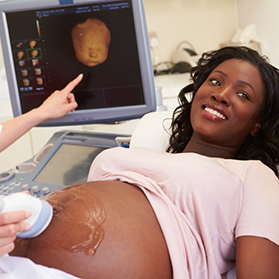4-D Ultrasound Offers Clearest-Yet Picture of Your Baby

When you’re expecting, you want to know as much as possible about the little person growing inside you, especially what he or she will look like.
Four-dimensional (4-D) ultrasounds, which provide a 3-dimensional image of your baby, in real time, allow you to do just that – right down to your baby’s facial expression. “You’re actually able to see the shape of the face, the hands, the arms – you can actually see the structures,” Alan Altman MD, an obstetrician and gynecologist at TriHealth Associates in Ob-Gyn, explains.
4-D Ultrasound: How Does it Work?
A 4-D ultrasound is similar to a standard ultrasound, in the nature of how it’s performed, and takes about 30 to 40 minutes. While a standard ultrasound is done at 20 weeks, a 4D ultrasound is typically performed between weeks 28 and 32 of pregnancy, in order to get the clearest picture possible.
During a 4-D ultrasound, it’s especially important that your baby is in a good position in order to get a clear face or hand picture. Unfortunately, there’s nothing your doctor or technician can do to coax your baby into a good position, if he or she is not cooperating. “Baby's in charge of that," Dr. Altman laughs. "We can move you around a little bit, but sometimes we even have to have you come back for another scan, if we can’t get it,” Dr. Altman adds.

The picture shows up in a brown-orange color, instead of black and white, in order to show the three-dimensional effect.
The main difference between a 2-D and 4-D ultrasound is that 4-D is an elective, or “entertainment,” scan. “It’s not a medical scan,” Dr. Altman points out. “But, if we see something, certainly, we’ll address it.”
4-D Ultrasound: Are There Any Risks?
Currently, there are not any known short- or long-term risks associated with ultrasound in general, Dr. Altman says. Similarly, there are not any different risks between a 2-D and 4-D scan.